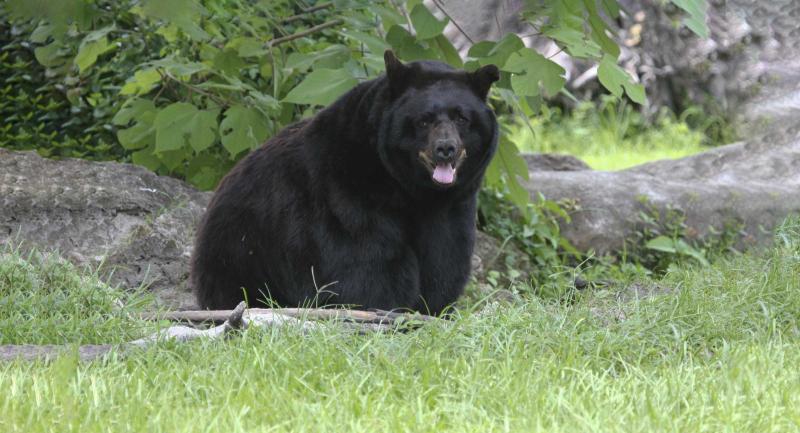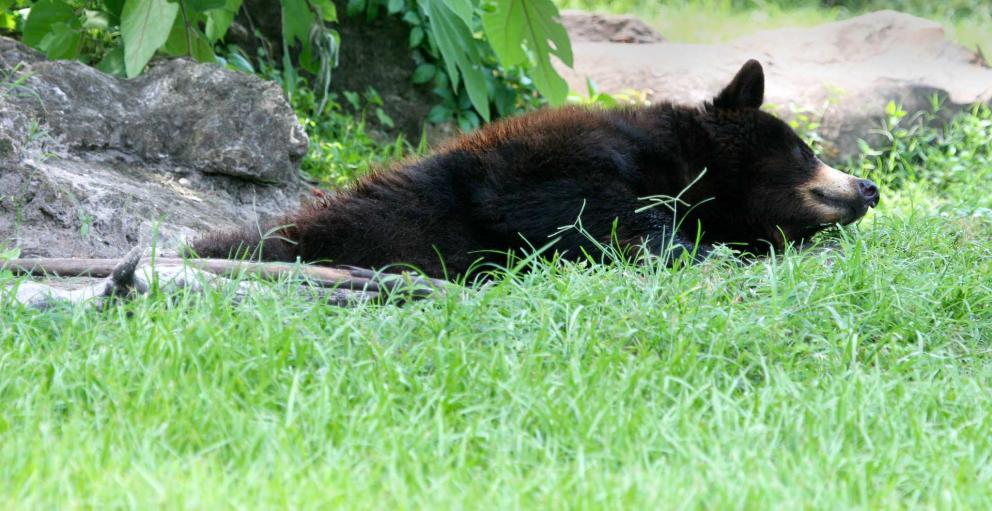The Florida black bear is the largest native land mammal in Florida. It is shy and secretive, hiding in dense vegetation and rarely seen in the wild. The Florida black bear has a shiny, black coat of long fur and a light brown nose and snout. Some black bears have white diamond-shaped patterns on their chests. The black bear has a short tail that is almost always hidden by its long fur, and long, sharp claws that help the bear climb trees or dig for food.
Bears are omnivores, meaning they eat both vegetable and animal matter. Some foods a black bear may eat include acorns, insects, berries, saw palmetto and sabal palm fruits, armadillos and honey. Long thought to only be in search of honey, many bear biologists now believe that when a bear cracks open a beehive, it is looking for both the sweetness of the honey and the protein provided by the bee larvae. With a large appetite, it is no wonder that female bears can weigh between 150 and 300 pounds and male bears can weigh between 250 and 450 pounds. Most Florida black bears are 5 to 6 feet long and are about 3 feet high at the shoulder.
It's not because of their size that black bears are called an "umbrella species." Black bears need a variety of habitats over a large geographic area to meet their ecological requirements. As such, they share living space with a variety of other protected, threatened and endangered animals. Some of these include the gopher tortoise, Eastern indigo snake and the Florida scrub jay. By protecting the Florida black bear and its habitat, we also protect these other species' habitats. In this way, everybody gets protection under the umbrella! You see, the Florida black bear is an important part of Florida's ecosystems.
It is believed there were as many as 12,000 black bears living throughout Florida in the past. In 1974 black bears were listed as a state-designated Threatened species but were removed from the list in 2012 due to conservation efforts. Today, there are an estimated 4,000 black bears in Florida living in seven main locations. About 20 black bears are estimated to live in the Chassahowitzka area.
Biologists believe the decline in Florida's black bear population is due to historic hunting pressure and the destruction of bear habitats from land development. The latter has led many bears to be struck and killed by vehicles while crossing busy highways in search of living space and food. In fact, vehicles are the No. 1 way Florida’s black bears are harmed. But there's some hope for Florida's remaining black bears. Many people now realize the important role this mammal plays in Florida's ecosystems, and efforts are being made to protect more habitat for this endangered species.


